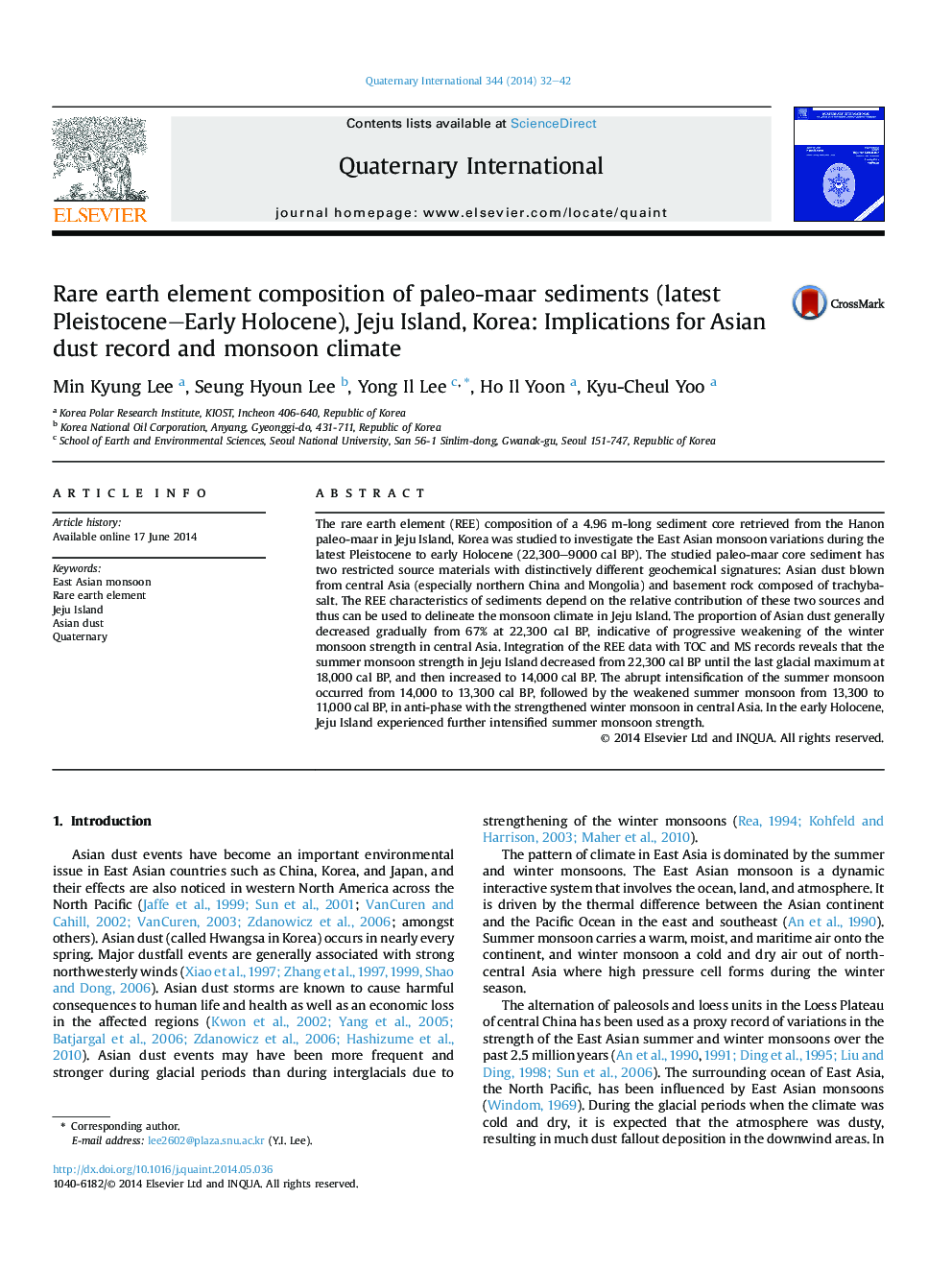| Article ID | Journal | Published Year | Pages | File Type |
|---|---|---|---|---|
| 1041202 | Quaternary International | 2014 | 11 Pages |
The rare earth element (REE) composition of a 4.96 m-long sediment core retrieved from the Hanon paleo-maar in Jeju Island, Korea was studied to investigate the East Asian monsoon variations during the latest Pleistocene to early Holocene (22,300–9000 cal BP). The studied paleo-maar core sediment has two restricted source materials with distinctively different geochemical signatures: Asian dust blown from central Asia (especially northern China and Mongolia) and basement rock composed of trachybasalt. The REE characteristics of sediments depend on the relative contribution of these two sources and thus can be used to delineate the monsoon climate in Jeju Island. The proportion of Asian dust generally decreased gradually from 67% at 22,300 cal BP, indicative of progressive weakening of the winter monsoon strength in central Asia. Integration of the REE data with TOC and MS records reveals that the summer monsoon strength in Jeju Island decreased from 22,300 cal BP until the last glacial maximum at 18,000 cal BP, and then increased to 14,000 cal BP. The abrupt intensification of the summer monsoon occurred from 14,000 to 13,300 cal BP, followed by the weakened summer monsoon from 13,300 to 11,000 cal BP, in anti-phase with the strengthened winter monsoon in central Asia. In the early Holocene, Jeju Island experienced further intensified summer monsoon strength.
